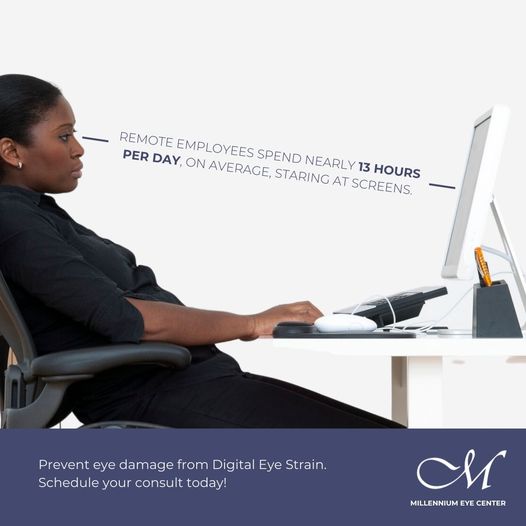Understanding Digital Eye Strain: A Guide to Protecting Your Vision in the Digital Age
The digital age has revolutionized the way we live, learn, and play. From work to entertainment, screens have become an integral part of our daily lives. However, excessive screen time can lead to a condition known as digital eye strain, a common issue that affects both children and adults. In this blog, we’ll delve into what digital eye strain is, why it occurs, and how you can prevent it to safeguard your family’s eye health.
What is Digital Eye Strain?
Digital eye strain, also known as computer vision syndrome, is a condition characterized by eye discomfort and fatigue resulting from prolonged use of digital devices such as smartphones, tablets, computers, and televisions. When we focus on screens for extended periods, our eyes work harder, leading to symptoms that may include:
- Headaches: Often caused by intense focus and eye muscle strain.
- Dry Eyes: Reduced blinking during screen use can lead to insufficient moisture on the eye’s surface.
- Blurred Vision: Staring at screens can cause temporary vision blurring.
- Neck and Shoulder Pain: Poor posture and the constant need to adjust your viewing angle can result in physical discomfort.
- Difficulty Concentrating: Eye strain can make it harder to focus on tasks and lead to fatigue.
Why Are Children at Risk?
Children are particularly vulnerable to digital eye strain due to the increasing amount of time they spend on screens for education, entertainment, and social interaction. Their developing eyes are more susceptible to the effects of prolonged screen use, making it essential for parents to be proactive in managing their children’s screen time and eye health.
Tips to Prevent Digital Eye Strain
Fortunately, there are several strategies you can implement to prevent digital eye strain and protect your family’s vision:
- Follow the 20-20-20 Rule: Every 20 minutes, encourage your child to take a 20-second break and look at something 20 feet away. This simple practice helps relax the eye muscles and reduce strain.
- Maintain Proper Posture: Ensure that your child sits up straight with the screen at eye level. This posture reduces strain on the neck, shoulders, and eyes.
- Adjust Screen Brightness and Contrast: Reduce glare and ensure the screen brightness matches the surrounding light. Proper contrast levels can also make it easier on the eyes.
- Increase Font Size: Larger text is easier to read and reduces the need for excessive squinting or leaning forward.
- Take Regular Breaks: Encourage your child to take short breaks from screens throughout the day, allowing their eyes to rest.
- Engage in Outdoor Activities: Spending time outdoors can help relax the eyes and provide a break from screen time, which is especially important for children.
- Schedule Regular Eye Exams: Regular eye exams are crucial for detecting any underlying eye problems and ensuring that your child’s vision is healthy.
- Limit Screen Time Before Bed: Encourage turning off digital devices at least three hours before bedtime to reduce eye strain and promote better sleep.
Millennium Eye Center Can Help
At Millennium Eye Center, our Orlando optometrists are dedicated to providing comprehensive eye care for children and adults. We understand the unique challenges that the digital age poses for eye health and are here to help you protect your vision. During a comprehensive eye exam, we can assess your child’s vision, recommend preventive measures, and provide treatment if necessary.
Protect Your Child’s Vision Today
Don’t let digital eye strain affect your child’s ability to thrive in the digital age. Schedule an appointment with Millennium Eye Center today to ensure your child’s eyes are healthy and equipped to handle the demands of modern technology.
By implementing these tips and prioritizing regular eye care, you can help prevent digital eye strain and ensure that your family’s vision remains clear and comfortable in our increasingly digital world.
Call to Action:
Schedule your digital eye exam with us today!
The content on this blog is not intended to be a substitute for professional medical advice, diagnosis, or treatment. Always seek the advice of qualified health providers with questions you may have regarding medical conditions.

